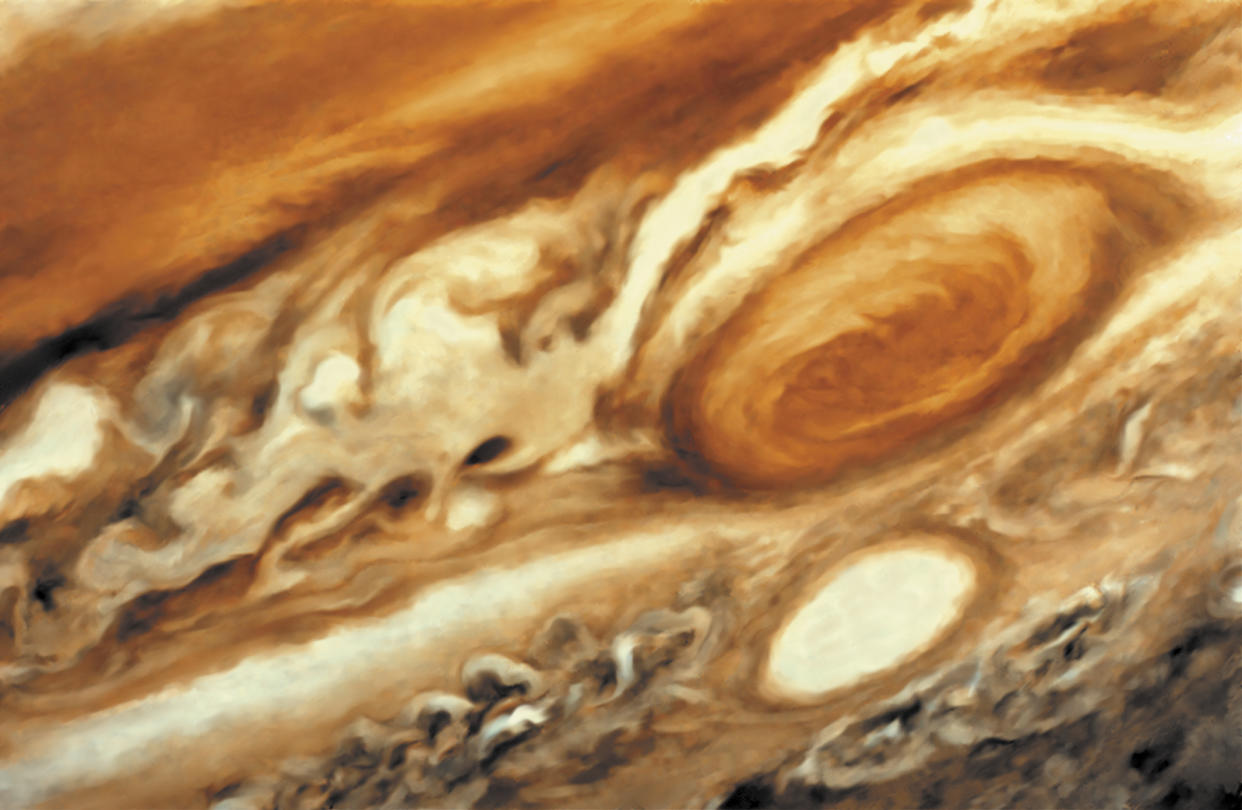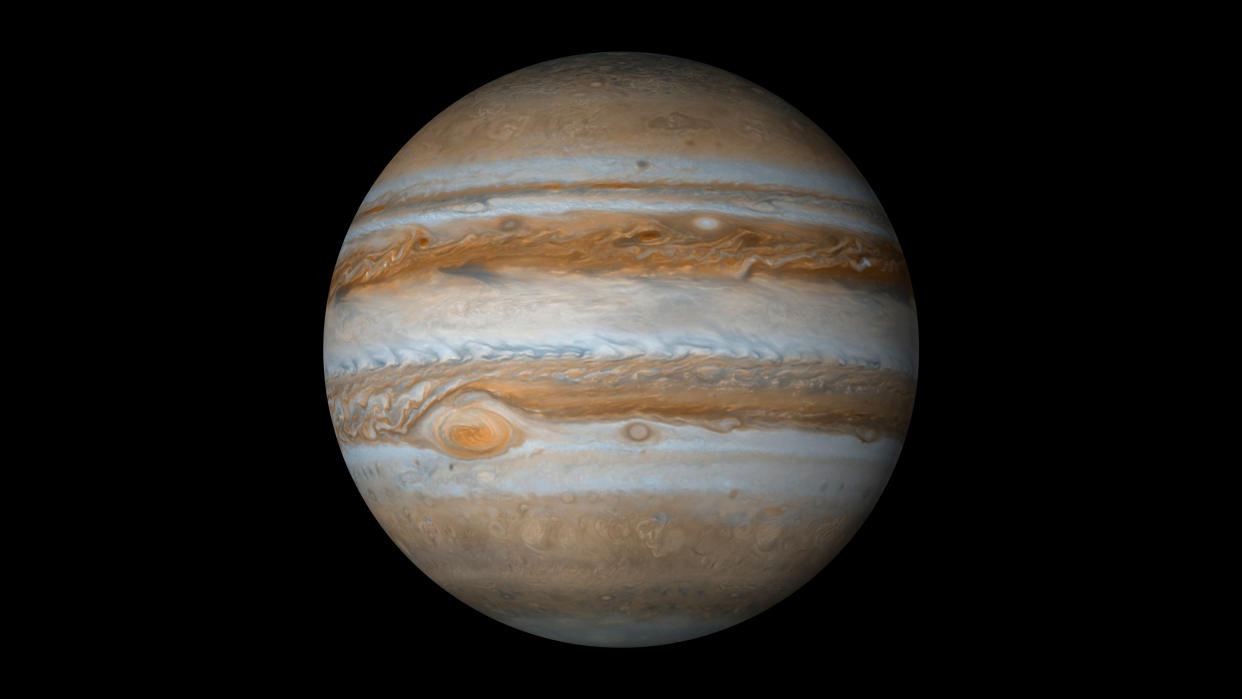Jupiter’s Great Red Spot is not vanishing after all, scientists say

Reports that Jupiter’s Great Red Spot, the gas giant's iconic 10,000-mile-wide storm, is dying have been found to be “greatly exaggerated”.
Last year, scientists sounded the alarm over the storm, which has been monitored since 1830, when telescope technology allowed us to see it, and has possibly existed for more than 350 years.
When it was first spotted, it was twice as wide as Earth, but now it’s just 1.3 times the diameter of our planet - and scientists warned last year it might only last another couple of decades.
But these warnings are overblown, scientists said this week.
Professor Philip Marcus at the University of California, Berkeley said: “The shrinking of the clouds of the Great Red Spot on Jupiter has been well documented with photographic evidence from the last decade.
READ MORE
Binary Earth-sized planets possible around distant stars
Insects could die out in ‘worst exctinction since the dinosaurs’
NASA satellite captures incredible beauty of UK seen from space
Why Iran’s nuclear escalation goes unchallenged
“The pictures from astronomers, both professionals and amateur, are not telling the whole story about the Great Red Spot.”
Last spring, observers assumed the worst when they saw “large red flakes” being ripped from the red spot.
But the researchers believe the “flaking phenomenon” is natural, while the visible clouds hide the true size and nature of the storm’s vortex.
Prof Marcus said: "I don't think its fortunes were ever bad.
“It's more like Mark Twain's comment: the reports about its death have been greatly exaggerated.
“There is no evidence the vortex itself has changed in size or intensity.”

The researchers believe the flakes were in fact caused by collisions with smaller cloud formations.
Professor Marcus said: "Smaller cloud formations bumped into the Great Red Spot, sometimes creating stagnation points, where the velocity abruptly stops, restarts and goes off in different directions.
“These points indicate where an approaching cloud shattered and created the flakes that were observed by astronomers.”
The team says changes in temperature around the vortex sustain the storms’ energy levels and will ensure it continues to rage for centuries to come.
Professor Marcus said: “A secondary circulation, driven by the heating and cooling above and below the vortex, allows the Great Red Spot to continue to exist over the centuries, fighting off decay of its energy from viscosity, turbulence and heat loss.”
Jupiter is more than twice the size of all the other planets combined and made up of cold clouds of ammonia in an atmosphere of hydrogen and helium.
NASA’s Juno spacecraft has been orbiting the gas giant since it arrived in 2016, after five years of travelling through space.
Professor Marcus is due to present the latest findings at the Washington State Convention Centre in Seattle.


